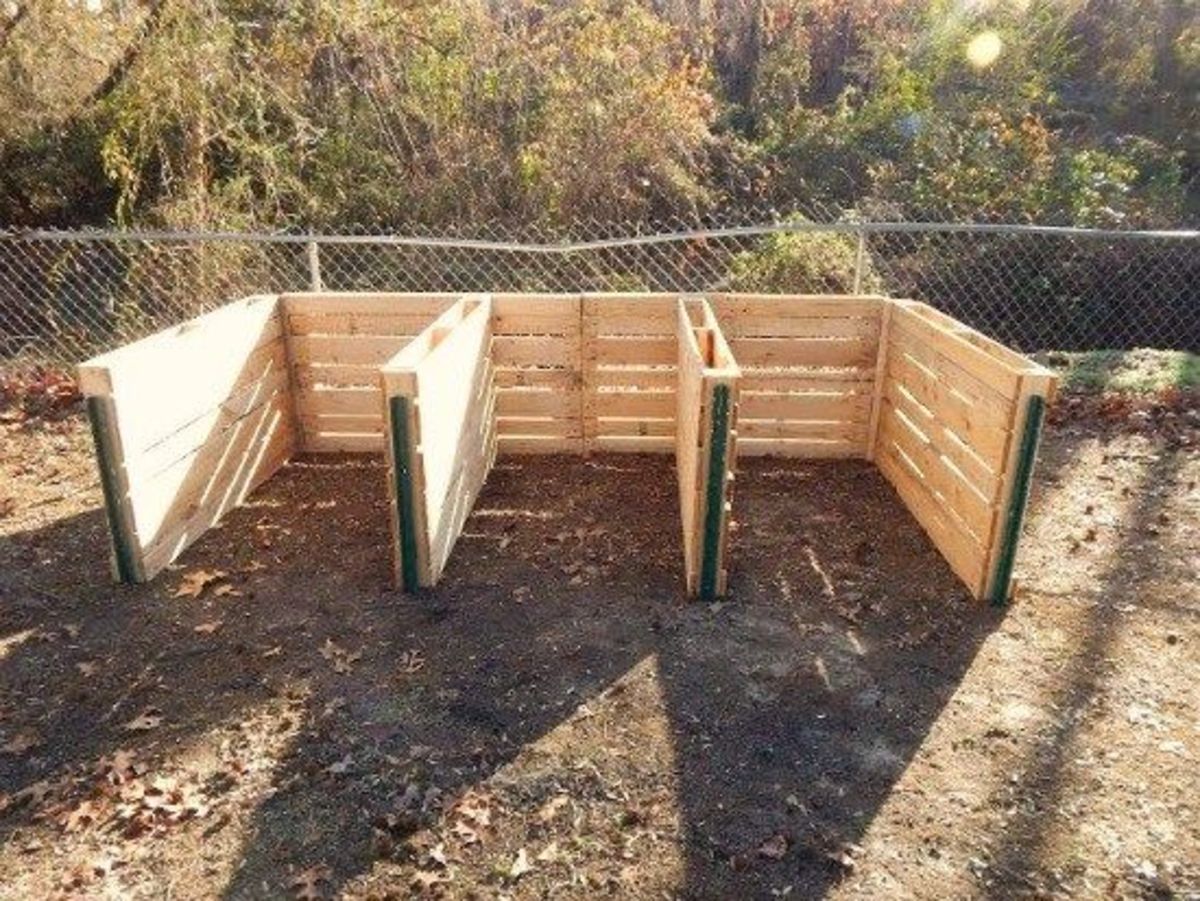Home>Gardening Basics>Understanding Soil>What Are The Layers Of Soil Called?


Understanding Soil
What Are The Layers Of Soil Called?
Published: February 9, 2024
Learn about the layers of soil, also known as soil horizons, and gain a deeper understanding of soil composition and structure. Explore the importance of understanding soil for gardening, agriculture, and environmental conservation.
(Many of the links in this article redirect to a specific reviewed product. Your purchase of these products through affiliate links helps to generate commission for Chicagolandgardening.com, at no extra cost. Learn more)
Introduction
Soil is a complex and dynamic natural resource that serves as the foundation for all terrestrial life. It is a critical component of the Earth's ecosystem, supporting plant growth, regulating water flow, and providing habitat for a myriad of organisms. Understanding the composition and structure of soil is essential for sustainable land use and agriculture. The layers of soil, known as soil horizons, play a crucial role in determining the soil's fertility, drainage, and overall health.
Exploring the layers of soil provides valuable insights into the processes that shape the Earth's surface and influence the environment. Each layer has distinct characteristics and functions, contributing to the overall productivity and resilience of the soil. By delving into the layers of soil, we can gain a deeper appreciation for the interconnectedness of natural systems and the importance of preserving soil quality for future generations.
Throughout this article, we will embark on a journey beneath the Earth's surface to uncover the intricate layers of soil, shedding light on their individual properties and collective significance. From the organic matter at the surface to the bedrock beneath, each layer contributes to the rich tapestry of soil formation and sustenance. Let's delve into the depths of soil science and unearth the secrets hidden beneath our feet.
Organic Matter
At the topmost layer of the soil, we encounter the organic matter horizon, also known as the O horizon. This layer is teeming with life, as it consists of decomposing plant and animal residues, living organisms, and various stages of organic material decay. The organic matter plays a pivotal role in soil fertility and structure, influencing the availability of nutrients and the soil’s capacity to retain moisture.
The accumulation of organic matter is a result of the continuous cycle of plant growth, death, and decomposition. Fallen leaves, twigs, and other plant debris enrich the soil as they break down, releasing essential nutrients such as nitrogen, phosphorus, and potassium. This layer also harbors a diverse community of microorganisms, including bacteria, fungi, and earthworms, which contribute to the decomposition process and the formation of humus, a dark, organic-rich substance that enhances soil structure and nutrient retention.
Furthermore, the organic matter horizon serves as a reservoir for carbon, playing a crucial role in the global carbon cycle and climate regulation. As organic materials decompose, they release carbon dioxide and other gases into the atmosphere, impacting the Earth’s carbon balance. Understanding the dynamics of organic matter in soil is essential for addressing climate change and developing sustainable land management practices.
By nurturing the organic matter horizon through practices such as composting, crop rotation, and minimal tillage, farmers and gardeners can enhance soil fertility and resilience. This layer exemplifies the intricate relationship between life and soil, underscoring the importance of preserving organic matter for the health of ecosystems and agricultural productivity.
Topsoil
Beneath the organic matter horizon lies the topsoil, often referred to as the A horizon. This layer is of paramount importance for plant growth and agricultural productivity, as it contains a rich concentration of minerals, organic matter, and a thriving microbial community. The topsoil is a dynamic interface where biological, chemical, and physical processes converge to create an environment conducive to root development and nutrient uptake.
The composition of the topsoil varies across different regions and ecosystems, influenced by factors such as climate, vegetation, and human activities. It typically consists of a balanced mixture of sand, silt, clay, and organic matter, collectively known as loam. This ideal composition allows for adequate drainage, water retention, and aeration, providing an optimal habitat for soil organisms and plant roots.
One of the defining characteristics of the topsoil is its role as a reservoir for essential nutrients that sustain plant growth. Nutrients such as nitrogen, phosphorus, and potassium are vital for the development of healthy crops and diverse vegetation. Additionally, the topsoil serves as a medium for the complex interactions between roots and mycorrhizal fungi, which facilitate nutrient exchange and enhance plant resilience.
Human activities, including agriculture and urban development, can significantly impact the topsoil through erosion, compaction, and depletion of nutrients. Sustainable soil management practices, such as cover cropping, crop rotation, and organic amendments, are essential for preserving and enhancing the topsoil’s fertility and structure. By prioritizing the conservation of the topsoil, we can ensure the long-term productivity of agricultural lands and the sustainability of natural ecosystems.
Subsoil
Beneath the topsoil lies the subsoil, often referred to as the B horizon. This layer exhibits distinct characteristics that influence the movement of water, the distribution of nutrients, and the stability of the soil profile. While the subsoil may lack the organic matter and biological activity present in the topsoil, it plays a critical role in supporting plant growth and regulating the hydrological properties of the soil.
One of the defining features of the subsoil is the accumulation of minerals and nutrients leached from the overlying topsoil. This process, driven by the downward movement of water through the soil profile, leads to the enrichment of the subsoil with minerals such as iron, aluminum, and clay particles. These minerals contribute to the development of soil structure and influence the availability of nutrients for plant uptake.
Moreover, the subsoil’s physical properties, including texture and porosity, impact the soil’s ability to store and transmit water. The presence of clay-rich layers in the subsoil can affect drainage and root penetration, influencing the overall resilience of plants to drought and waterlogging. Understanding the characteristics of the subsoil is crucial for making informed decisions regarding land use, irrigation practices, and the selection of suitable plant species.
In agricultural contexts, deep-rooted crops can access the nutrients and moisture stored in the subsoil, contributing to their ability to withstand environmental stresses and optimize yield potential. Additionally, the subsoil’s role in regulating water movement has implications for groundwater recharge, erosion control, and the mitigation of surface runoff.
By recognizing the significance of the subsoil in soil-plant interactions and ecosystem dynamics, land managers and conservationists can implement strategies to enhance subsoil quality and promote sustainable land use. Through responsible soil management practices and the integration of agroecological principles, we can harness the potential of the subsoil to support resilient and productive agricultural systems.
Parent Material
Below the subsoil lies the parent material, which serves as the geological foundation from which the soil horizon develops. This material, often consisting of weathered rock, sediment, or organic deposits, undergoes physical and chemical transformations over time, ultimately giving rise to the diverse array of soil types observed across landscapes.
The composition and characteristics of the parent material profoundly influence the properties of the soil, including its texture, mineral content, and drainage capacity. For instance, soils derived from limestone parent material may exhibit alkaline pH levels and high calcium content, while soils formed from granite may display a more acidic nature and contain elevated levels of potassium and silica.
Geological processes such as weathering, erosion, and deposition shape the parent material, contributing to the development of unique soil profiles and properties. The gradual breakdown of rocks and minerals by physical, chemical, and biological forces results in the release of essential nutrients and the formation of soil particles of varying sizes.
Furthermore, the parent material influences the soil’s capacity to support vegetation and sustain agricultural activities. Soils derived from different parent materials exhibit diverse fertility levels, drainage characteristics, and susceptibility to erosion. Understanding the origin and composition of the parent material is essential for assessing soil quality, selecting appropriate land uses, and implementing soil conservation measures.
By recognizing the influence of parent material on soil formation and properties, land managers, geologists, and agricultural practitioners can make informed decisions regarding land suitability, nutrient management, and erosion control. The geological legacy embedded in the parent material shapes the foundation of soil ecosystems, highlighting the interconnectedness of Earth’s processes and the significance of preserving soil diversity for future generations.
Bedrock
Beneath the layers of soil, we encounter the bedrock, the solid rock layer that underlies the soil horizons. This foundational rock formation serves as the ultimate substrate from which soils derive their physical and chemical characteristics. The composition and structure of the bedrock exert a profound influence on soil development, topography, and the broader geological landscape.
Bedrock composition varies widely, encompassing a diverse range of rock types such as granite, limestone, shale, and sandstone, each with distinct mineral compositions and physical properties. Over geological time scales, natural processes such as tectonic activity, weathering, and erosion shape the bedrock, contributing to the formation of soil and the sculpting of landforms.
Furthermore, the bedrock serves as a reservoir for groundwater, influencing hydrological processes and the availability of water for plant growth and human consumption. The fractures and pore spaces within the bedrock can store and transmit water, playing a crucial role in aquifer recharge and the sustenance of surface water bodies.
Geological features associated with the bedrock, such as fault lines, outcrops, and mineral deposits, contribute to the diversity of landscapes and ecosystems. The physical attributes of the bedrock, including its resistance to weathering and erosion, shape the topography and provide habitats for unique plant and animal communities.
Understanding the characteristics of the bedrock is essential for land use planning, geological conservation, and the sustainable management of natural resources. By recognizing the role of bedrock in shaping the Earth’s surface and supporting terrestrial life, scientists, conservationists, and land managers can make informed decisions to safeguard geological heritage and promote environmental stewardship.
Conclusion
The layers of soil, from the organic matter horizon to the bedrock, form a complex and interconnected system that sustains life on Earth. Each layer plays a unique role in shaping the physical, chemical, and biological properties of the soil, influencing its fertility, resilience, and capacity to support diverse ecosystems. By delving into the depths of soil science, we gain a deeper appreciation for the intricate processes that govern soil formation and the critical role of soil in sustaining terrestrial life.
The organic matter horizon, with its abundance of decomposing plant and animal residues, serves as a source of nutrients and energy for soil organisms, enriching the soil and enhancing its structure. This layer exemplifies the dynamic interplay between life and soil, underscoring the importance of preserving organic matter for the health of ecosystems and agricultural productivity.
As we descend into the topsoil, we encounter a dynamic interface teeming with minerals, organic matter, and a thriving microbial community. The topsoil’s role as a reservoir for essential nutrients and a medium for root development highlights its significance in supporting plant growth and agricultural productivity. Sustainable soil management practices are essential for preserving and enhancing the topsoil’s fertility and structure.
Beneath the topsoil, the subsoil influences the movement of water, the distribution of nutrients, and the stability of the soil profile. Its role in regulating water movement has implications for groundwater recharge, erosion control, and the mitigation of surface runoff. Understanding the characteristics of the subsoil is crucial for making informed decisions regarding land use, irrigation practices, and the selection of suitable plant species.
The parent material, shaped by geological processes, profoundly influences the properties of the soil, including its texture, mineral content, and drainage capacity. Recognizing the influence of parent material on soil formation and properties is essential for assessing soil quality, selecting appropriate land uses, and implementing soil conservation measures.
Finally, the bedrock, the solid rock layer underlying the soil horizons, serves as the ultimate substrate from which soils derive their physical and chemical characteristics. Its composition and structure exert a profound influence on soil development, topography, and the broader geological landscape.
By recognizing the significance of each layer of soil, we can cultivate a deeper understanding of the Earth’s interconnected systems and the importance of preserving soil quality for future generations. Through responsible land management practices and the integration of ecological principles, we can harness the potential of soil to support resilient ecosystems, sustainable agriculture, and a healthy planet.







